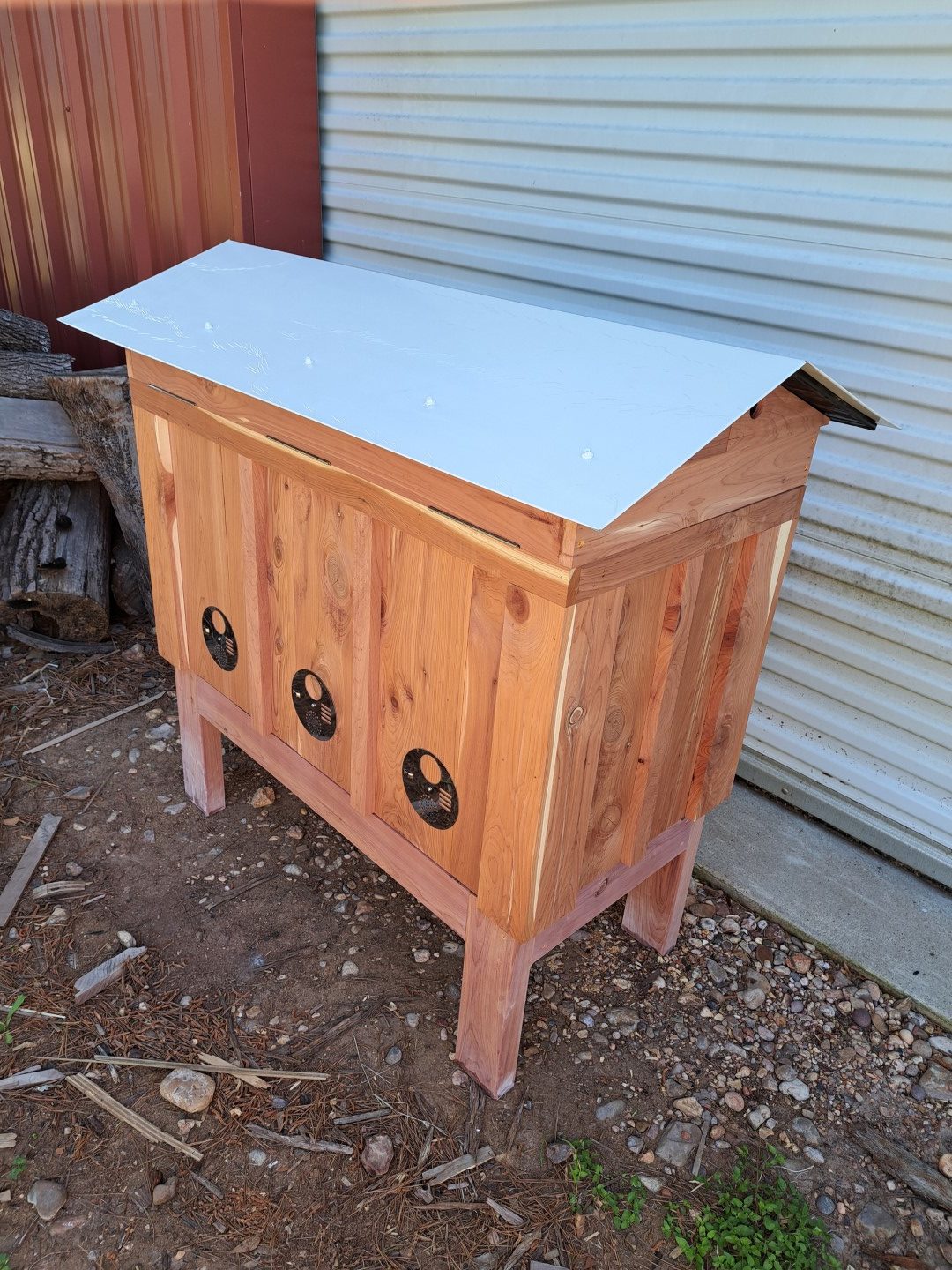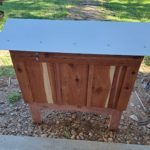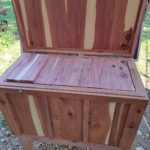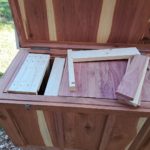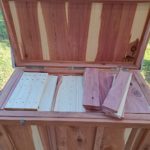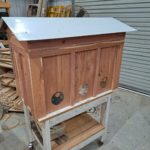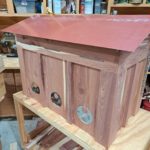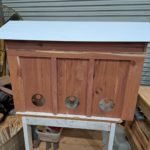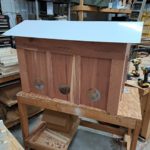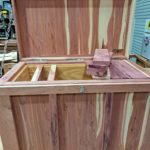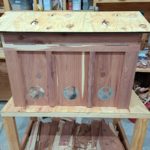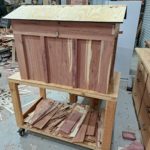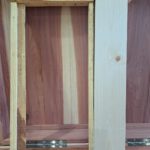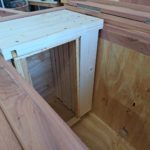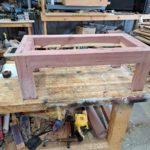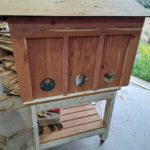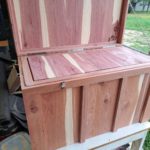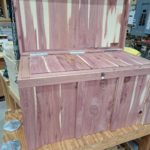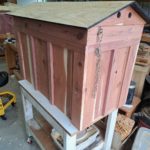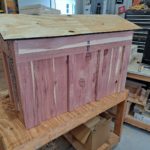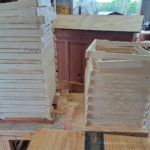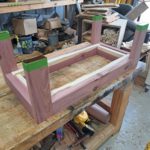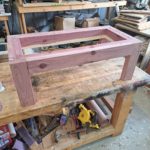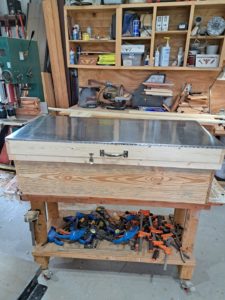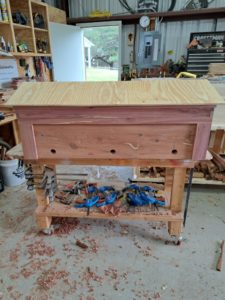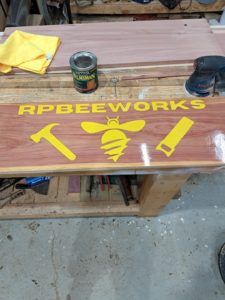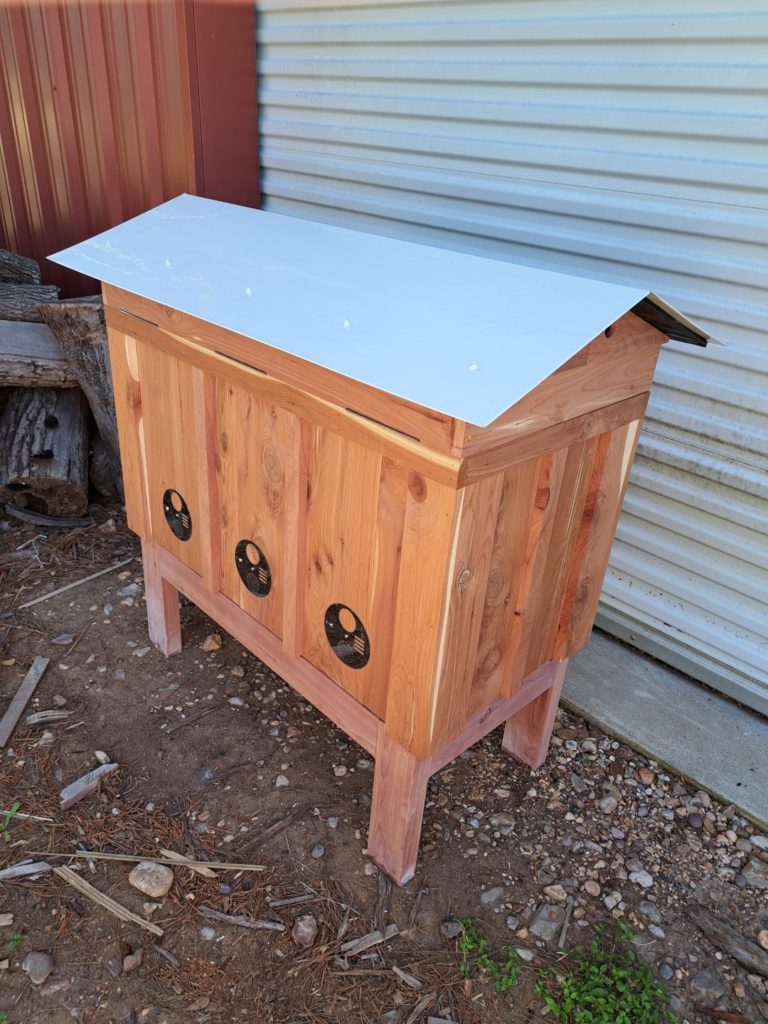
Finished up the three cedar Layens hives and they were all picked up this past weekend. This first one is the extra tall one to accommodate the Langstroth conversion frames. It holds 20 frames and has two dividers. This hive had a cedar stand that was really strong and will live out in west Texas, hence the white lid color choice.
The next one is going to southeast Texas and also has a white lid. It is the traditional height and holds 20 Layens frames and has two cedar dividers. This hive has extra wood in the backend (user side) to drill a hole for an OA application if needed. It also comes with cover boards.

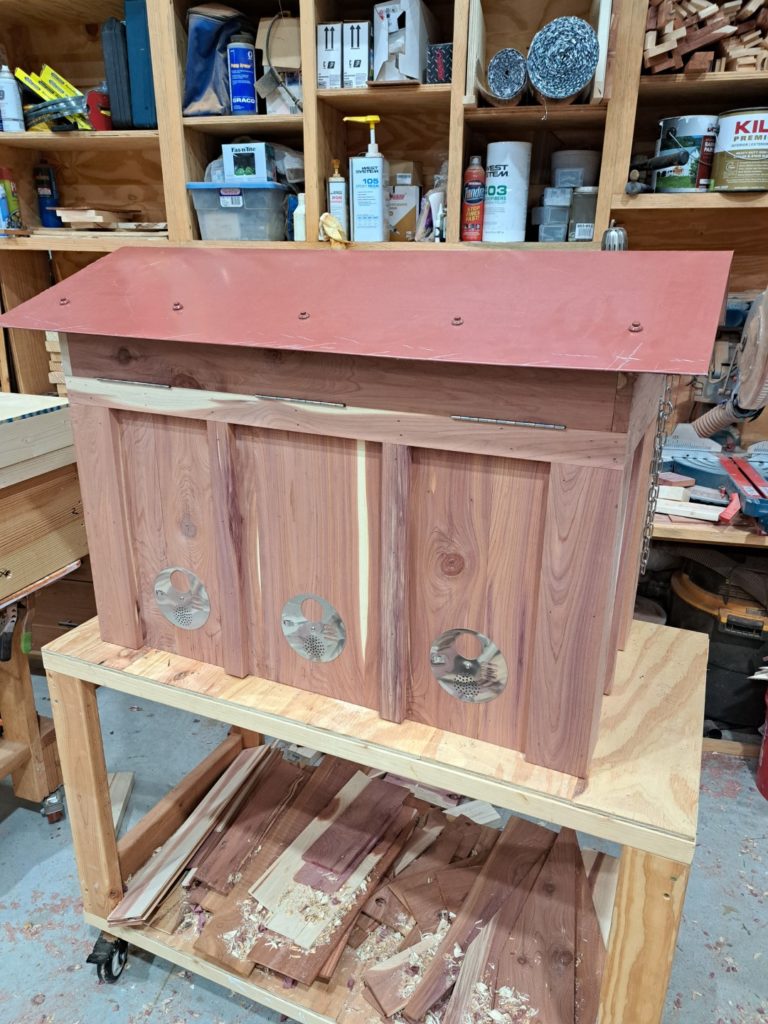
The last one was not a pre-order as most of my hives are. I posted this hive for sale and the next day it was sold.
This hive was built off the prototype box that I built a couple years ago when I was testing out the plywood sandwich walls. The box had been holding frame parts for a while and decided it would be best to build it out while doing these other two. The idea is always for efficiencies gained by similar cuts across multiple hives. However, as you read further you will see that there were only some similar cuts since this one was slightly off.
When I built this box the first time I thought I had the calculations correct for 20 frames but I was about a half frame short. So this is a 19 frame Layens hive that also has two dividers and cover boards. The cover boards are more important in this box because when the colony grows large enough to remove all the dividers, there will be a gap between the walls and the last frame. Will the bees care, not at all, especially since the cover boards will keep the bees in their spot. This hive also came with wired frames which I do not mind saying I am not a fan of wiring frames.
